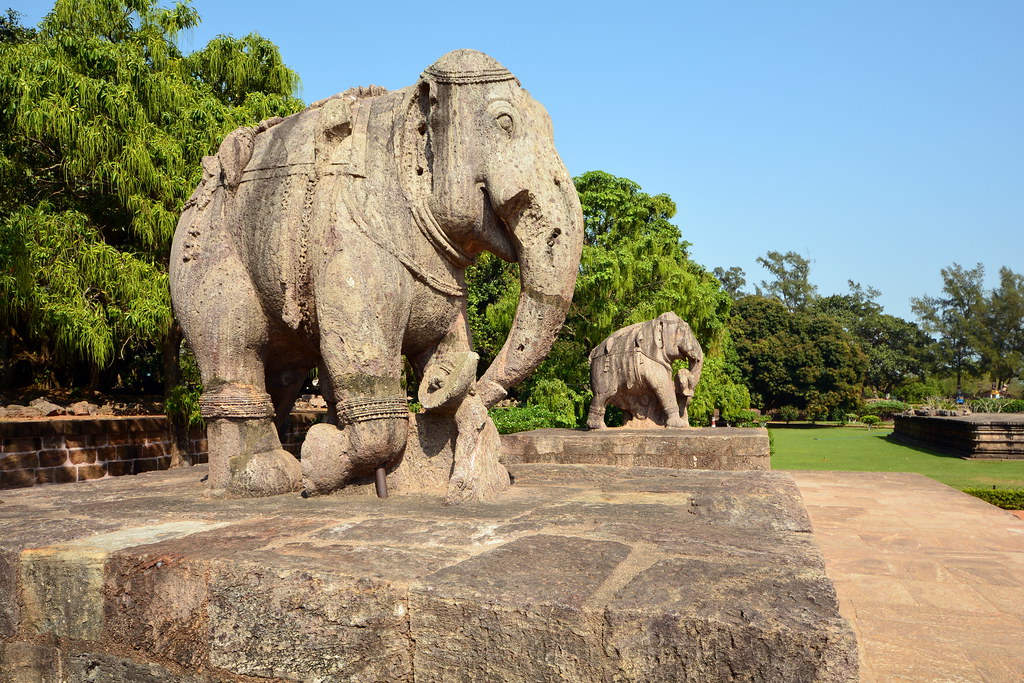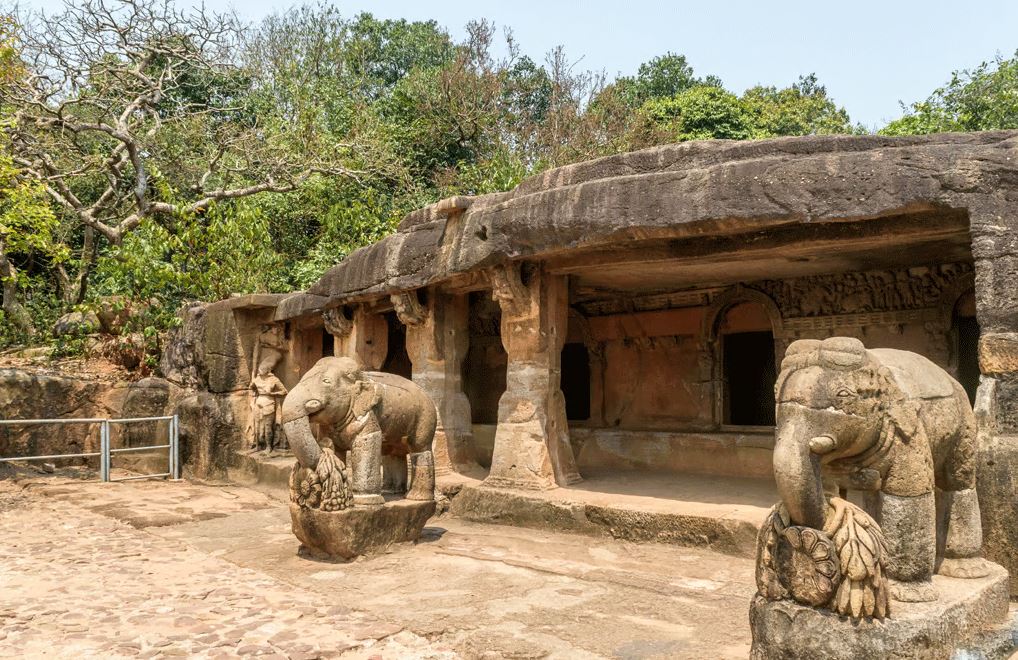Elephants in Art, Architecture and History of Odisha have always held a majestic and powerful presence in the cultural heritage of Odisha, an eastern state of India known for its rich history and artistic traditions. From ancient times to the present day, elephants have been featured prominently in various forms of art, architecture, and folklore, creating a deep-rooted connection between these gentle giants and the people of Odisha.
Elephants in Art, Architecture and History of Odisha has been a significant medium through which the reverence for elephants has been expressed in Odisha. One of the most famous examples is the Pattachitra, a traditional art form that involves intricate painting on a cloth canvas. Elephants are often depicted in these vibrant paintings, symbolizing strength, wisdom, and divinity. These artworks not only showcase the artistic skills of the artisans but also serve as a means to narrate stories from mythologies and epics where elephants play essential roles.

The architecture of Odisha also showcases the profound influence of elephants. The temples and monuments of this region are known for their magnificent sculptures and carvings, with elephants making frequent appearances. At the Konark Sun Temple, a UNESCO World Heritage Site, massive stone elephant sculptures guard the entrance, creating an awe-inspiring sight for visitors. These elephants signify the immense power of the Sun God, who is believed to traverse the sky on a chariot pulled by these majestic creatures.
In addition to art and architecture, the history of Odisha is intertwined with elephants through various events and traditions. The state has a long history of using elephants in battles, ceremonies, and royal processions. The Khurda Elephant Sanctuary, established in the 20th century, is a testament to this historical connection. It serves as a safe haven for elephants and is a reminder of the state’s enduring respect for these gentle creatures.
Furthermore, elephants hold a special place in the religious traditions of Odisha. During the famous Rath Yatra festival in Puri, Lord Jagannath is carried in a grand procession on a chariot known as the Nandighosa. The chariot is drawn by devotees, and traditionally, elephants were selected as the primary force to pull the chariot. This practice not only demonstrates the significance of elephants in religious ceremonies but also represents their association with Lord Jagannath, one of the most revered deities in Odisha.
You can read our another post on Metal Craft of Odisha

The Elephants in Art, Architecture and History of Odisha magnificent elephants of Odisha have left an indelible mark on its art, architecture, and history. They are not only admired for their physical grandeur but are also revered for their symbolic representation of power, divinity, and wisdom. The cultural heritage of Odisha is a testament to the bond between humans and elephants, emphasizing the need for their conservation and protection.
As we appreciate the elephants in Odisha’s art, architecture, and history, it becomes imperative for us to actively contribute to their preservation. By raising awareness, supporting conservation efforts, and promoting responsible tourism, we can ensure that these majestic creatures continue to inspire generations to come and remain an integral part of Odisha’s cultural heritage.

Writer A FAQ For Elephants in Art, Architecture and History of Odisha
How have elephants been depicted in art and architecture in Odisha?
Elephants have been prominently featured in various artworks and architectural structures in Odisha. They are often depicted in sculpture, relief carvings, and paintings, symbolizing power, strength, and divinity. Many temples and historical structures in Odisha also feature elephant motifs in their architecture.
What is the significance of elephants in the history of Odisha?
In the history of Odisha, elephants have played a significant role as symbols of royalty and power. They were used by rulers as a status symbol and were featured in grand processions and royal ceremonies. Elephants have also been present in various legends and folklore of Odisha, showcasing their cultural importance.
Can you provide examples of elephants in Odishan art and architecture?
Sure! Some famous examples include the elephant carvings at the Sun Temple in Konark, with ornate sculptures showcasing elephants as guardians. The Lingaraja Temple in Bhubaneswar also features elephant sculptures, while the walls of Odisha’s ancient caves depict beautifully painted elephant motifs.
How have elephants influenced Odishan artistic traditions?
Elephants have greatly influenced Odishan artistic traditions. The presence of elephants in various art forms, such as Pattachitra (traditional cloth paintings), Odishi dance performances, and even sand sculptures, showcases their influence on the region’s cultural heritage. The intricate details and reverence given to elephants in these art forms reflect their importance in Odishan traditions.
Are there any specific historical stories or myths about elephants in Odisha?
Yes, there are several stories and myths related to elephants in Odisha. One popular myth involves Lord Jagannath, the presiding deity of the famous Jagannath Temple in Puri, being rescued by an elephant during a mythical battle. This event is celebrated in the annual Rath Yatra (Chariot Festival) where Lord Jagannath is pulled in a chariot by devotees, accompanied by beautifully decorated elephants.
